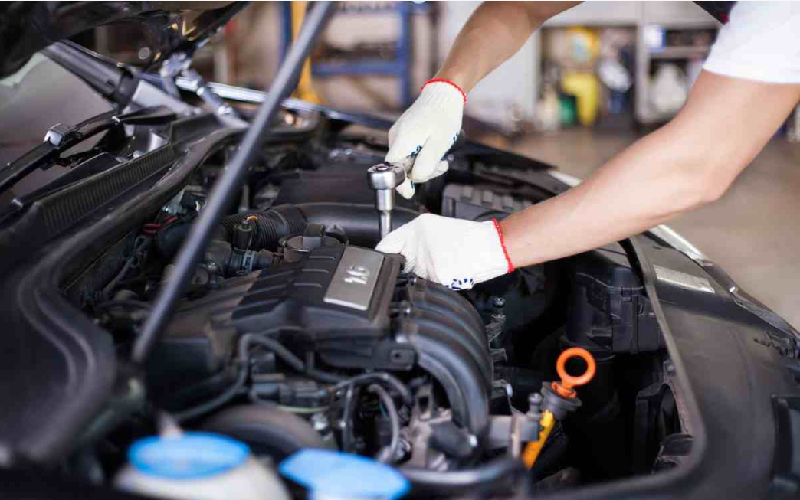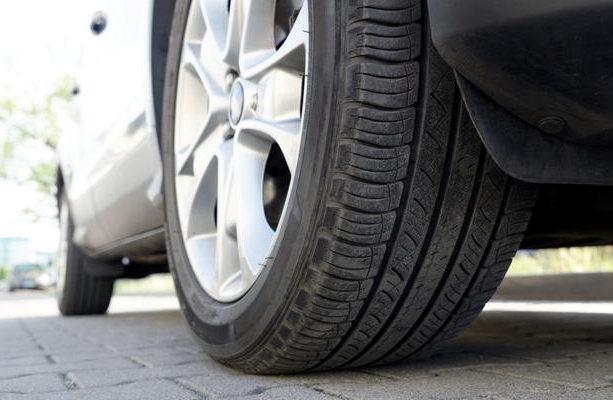What is the Car Water Pump?
The automotive water pump is an essential component in the engine system of a car. Inside the engine block, there are multiple water passages for coolant circulation, connected to the radiator (commonly known as the water tank) located at the front of the car through hoses, forming a large water circulation system. At the outlet of the engine, there is a water pump driven by the fan belt. It pumps out the hot coolant from the engine block and pumps in the cool coolant.
Next to the water pump is a thermostat. When the car is started (cold start), it remains closed, allowing the coolant to circulate only within the engine (commonly known as small circulation). Once the engine temperature reaches above 95 degrees, it opens, allowing the hot coolant to flow into the radiator. The cool air while driving passes through the radiator, dissipating the heat.

How does the water pump work?
The automotive engine widely uses a centrifugal water pump, which consists of several components, including the water pump housing, pulley or belt wheel, pump shaft and bearing or shaft connecting bearing, impeller, and sealing device. The engine drives the water pump shaft and impeller to rotate through the pulley. The coolant in the water pump is also carried along and rotates together. Under the action of centrifugal force, it is thrown towards the edge of the water pump housing, generating a certain pressure, and then flows out through the outlet or hose. Due to the reduced pressure at the center of the impeller where the coolant is thrown out, the coolant in the radiator is drawn into the impeller through the pressure difference between the water pump inlet and the center of the impeller, enabling the coolant to circulate back and forth.

How to maintain the water pump?
Start by checking the condition of the bearings based on the sound they produce. If there are any abnormalities, the bearings need to be replaced.
Disassemble and inspect the impeller for signs of wear. If there is wear, it can affect the flow, lift, and efficiency, requiring a replacement.
Check if the mechanical seal is still usable. If it is damaged, it should be replaced.
Verify if the oil tank is adequately filled. If it is low, add oil to the appropriate level.
Causes of automotive water pump damage:
1. Coolant leakage due to aging of the pump seal.
2. Over-tightened engine combination belt leading to premature pump wear.
3. Extended use of a water pump that has reached its service life without replacement.
4. Bend in the water pump shaft, worn shaft neck, or damaged thread at the shaft end.
5. Broken blades and worn shaft bearing holes on the impeller.
6. Degradation of the water seal and gasket.
7. Poor water pump performance leads to inadequate circulation, resulting in water pump leakage or disrupted circulation.
8. Prolonged use of coolant without replacement, causing internal corrosion and eventual water pump damage.

How to determine if the car's water pump needs replacement?
The car water pump is a crucial component of the vehicle. It continuously pumps coolant to the engine, preventing overheating. Leaks or bearing failures can cause severe engine damage. If there is coolant leakage under the car or if the temperature reading is too high, it may be an indication that the water pump needs to be replaced.
1. Park the car overnight on a clean concrete floor in the garage. If it is not possible to park the car in a garage with a clean concrete floor, place a light-colored cardboard directly under the engine area. Note that the water pump is more likely to leak when the engine is running, so it is not suitable to check for leaks when the engine is running.
2. Check the cardboard in the morning. If it is wet with coolant, there is a leak somewhere, most likely from the water pump. Other possible areas for coolant leaks include radiator hoses, heater hoses, freeze plugs, gaskets, or the radiator itself. To narrow down the scope, place the cardboard directly under the water pump. If you see green liquid on the cardboard, it indicates coolant leakage.
3. Inspect the water pump pulley. Check the circular component around which the front part of the water pump belt wraps. Wiggle the pulley back and forth, and if it feels loose, the pulley needs to be replaced as the bearing is failing.
4. Listen to the sound of the car. Open the car hood and start the engine. If you hear a low grinding noise, it may indicate a failing water pump bearing. If it's already damaged, the noise will be more pronounced. Keep in mind that similar bearings are present in the air conditioning compressor, power steering pump, and alternator, so it's crucial to identify the source of the sound clearly while the engine is running, which can be challenging.

5. Check for any leaks around the water pump. If you see water droplets or flowing water, there is a leak. Many water pumps have a weep hole in front of the seal. If the seal is damaged, water will leak from this hole.
6. Pay attention to the temperature warning light. If the car is low on coolant or if there is a water pump failure causing insufficient circulation, the engine temperature will rise, triggering the warning light.
7. Check if the coolant warning light is on. If it is illuminated, it could indicate a coolant reservoir leak or a water pump failure. Another possibility is a coolant system leak.
Tip: If you find a pool of water under the car on a hot day, it does not necessarily mean there is a problem with the water pump or cooling system. When the car's air conditioning system is running, condensation occurs. The condensed water may leak from underneath the car, which is a normal occurrence.
Look for the small hole, known as the weep hole. If the water pump is failing or has failed, there may be leakage from this weep hole.
Sometimes, there may be no leaks or bearing noise, and all components such as the fan, belts, hoses, thermostat, radiator, heater core, radiator cap, etc., are in proper working condition. Except for seeing steam coming out from the cap area during overheating, most of the time, this is normal as the cap is designed to release excess pressure and acts as an automatic fail-safe device to protect other components.

Some water pumps have plastic impellers that propel the coolant, and when the additives are depleted, some coolants can become corrosive (coolant should be replaced every three to seven years to prevent engine damage when the additives are depleted). The water pump impeller can wear down, unable to propel the coolant, resulting in the engine temperature becoming excessively high. Remove the radiator cap and perform a cold start to test if this is the case. You should be able to see movement of the coolant inside the radiator. If not, it is likely that the internal water pump impeller is missing or only partially remaining. However, this test is meaningless if your car has a thermostat, as the coolant circulates only when the thermostat is open at operating temperature, and you certainly don't want to open the radiator cap at operating temperature.
Warning: If the coolant is low and the car is starting or has just been started, let the car cool down before adding water or coolant. Adding cold water when the engine temperature is high can cause a sudden temperature change, potentially damaging engine components and turning a small expense into a major one.
Do not add 100% coolant to the car; it can cause the car's temperature to rise or lead to overheating. Follow the recommended ratio, usually a 50/50 mix, or as specified (some may require a 70/30 mix). Never use pure water, as modern engines require a higher boiling point.

In conclusion, the automotive water pump is a crucial component in the engine cooling system. It circulates coolant throughout the engine block and radiator to prevent overheating. The water pump is typically a centrifugal pump that uses impeller rotation to generate pressure and circulate the coolant. To maintain the water pump, check the bearings, impeller, mechanical seal, and oil level regularly. Common causes of water pump damage include coolant leakage, over-tightening of the engine belt, and prolonged use of coolant without replacement. Signs that the water pump may need a replacement include coolant leakage, a loose or noisy pulley, abnormal engine temperature, and warning lights. When replacing the water pump, it is essential to select a high-quality replacement and follow the manufacturer's instructions. Proper maintenance and replacement of the water pump can help ensure reliable engine cooling and prevent costly engine damage.
Contact Us
For further product information, please visit:
- Official website: https://www.lokithorshop.com/
- Facebook: https://www.facebook.com/Lokithorshop/
- Email address: info@lokithorshop.com
Recommend Reading: How Much Voltage Should A Car Battery Has?






Leave a comment
All comments are moderated before being published.
This site is protected by hCaptcha and the hCaptcha Privacy Policy and Terms of Service apply.